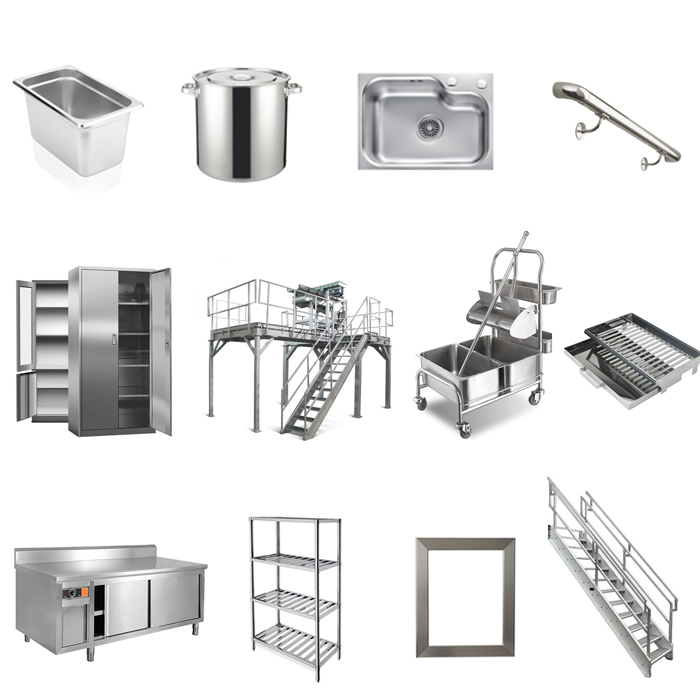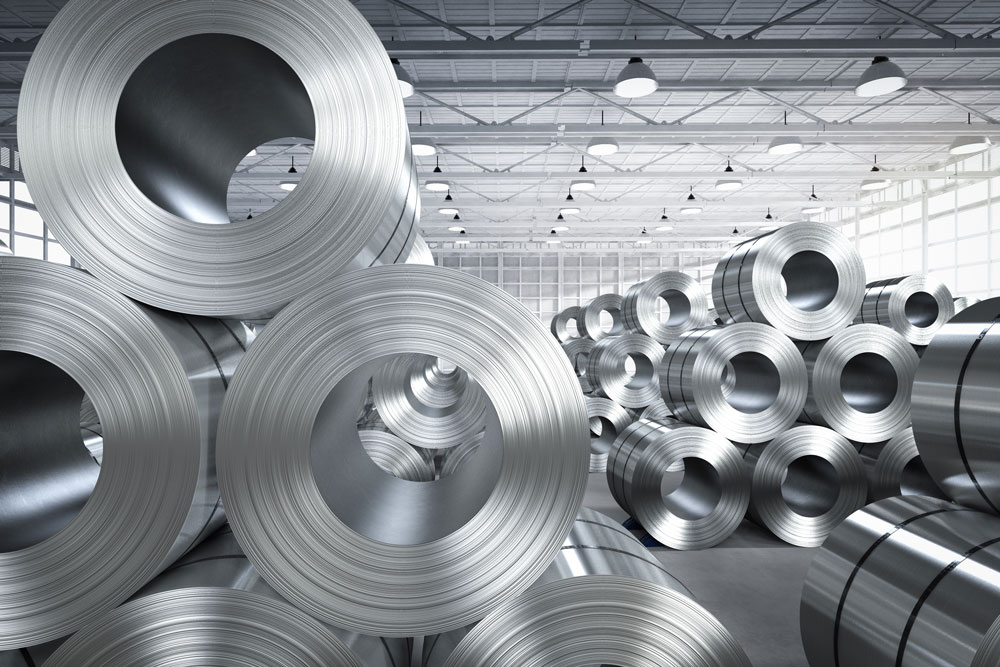Ideal Steel Fabricators Melbourne: Changing Concepts right into Truth
Comprehensive Evaluation of Cutting-Edge Techniques in Steel Construction Industry
As the steel manufacture market remains to progress, the integration of cutting-edge strategies has come to be necessary for staying affordable and meeting the demands of modern-day manufacturing standards. From laser reducing improvements to the utilization of robotics and 3D printing in steel manufacturing, the landscape of manufacture methods is swiftly changing. With each technology bringing its own set of challenges and benefits, a thorough analysis of these methods is paramount for business intending to simplify their processes, improve accuracy, and ultimately, raise the high quality of their steel manufacture output. In this dynamic market where modern technology plays a pivotal role, recognizing the subtleties of these cutting-edge methods is not simply an alternative yet a necessity for those seeking to advance in the ever-evolving world of steel fabrication.
Laser Cutting Advancements
In the realm of steel manufacture, laser reducing improvements have actually reinvented the precision and efficiency of metal shaping procedures. By harnessing the power of concentrated laser beams, manufacturers can currently attain unmatched degrees of precision when cutting through numerous kinds of steels. This modern technology allows elaborate designs to be executed with marginal product waste, making it a cost-efficient remedy for markets needing high precision parts.
Among the essential benefits of laser cutting is its capability to deal with a vast array of materials, including stainless steel, light weight aluminum, and carbon steel, with ease. The process generates clean, burr-free edges, removing the need for added completing steps. Moreover, the non-contact nature of laser cutting lowers the risk of product contamination, leading to better final product.
Additionally, laser reducing devices can be programmed to make swift, exact cuts, substantially reducing manufacturing time contrasted to conventional reducing methods. This speed and precision make laser cutting especially suitable for automation settings where efficiency is vital. As technology remains to development, laser cutting is positioned to play a progressively essential role in the steel construction sector.

CNC Machining Innovations
The advancement of CNC machining technologies has ushered in a new era of accuracy and efficiency in the steel manufacture market. Computer System Numerical Control (CNC) equipments have actually revolutionized steel fabrication by providing exceptional accuracy and repeatability in the production procedure. Alpha reo. One of the essential developments in CNC machining is the combination of sophisticated software application systems that allow real-time tracking and modifications, causing boosted efficiency and top quality control
Moreover, the advancement of multi-axis CNC makers has enabled for the fabrication of complex steel parts with detailed layouts that were formerly challenging to produce. These machines can carry out a variety of machining procedures, consisting of milling, boring, turning, and grinding, all with high degrees of accuracy.
Furthermore, the incorporation of automation and robotics in CNC machining has structured manufacturing processes, reduced preparations, and lessened the margin of error. This assimilation of sophisticated innovations not just increases efficiency however also ensures regular high quality throughout all produced steel components. To conclude, CNC machining developments proceed to drive improvements in the steel construction sector, setting brand-new requirements for accuracy and efficiency.
Automated Welding Technologies
Automated welding modern technologies have actually revolutionized the steel manufacture industry, boosting efficiency and accuracy in the welding process. These innovative technologies use computer-controlled systems to automate the welding procedure, resulting in greater productivity degrees and improved weld top quality. One of the crucial benefits of automated welding is the capability to execute complex welds with regular accuracy, decreasing the chance of errors and remodel.
Robot welding systems are at the center of automated welding modern technologies, providing unrivaled speed and accuracy. These systems can handle a broad array of welding jobs, from easy to intricate, effortlessly (metal fabrication melbourne). By utilizing sophisticated sensing units and software program, robotic welders can adapt to variations in material and joint geometry, making sure an attire and reliable weld
Moreover, automated welding modern technologies boost workplace safety by lessening the direct exposure of human welders to unsafe fumes and extreme warmth. As the steel manufacture sector remains to evolve, integrating automated welding technologies will be vital for business seeking to stay competitive and satisfy the growing needs for high-quality welded items.
Robotics Assimilation in Manufacture
Making use of robot systems in construction processes has become a pivotal technique for improving efficiency and precision in modern-day production atmospheres. Robotics combination in steel fabrication offers a myriad of advantages, consisting of boosted efficiency, improved quality control, and enhanced safety and security procedures. These sophisticated robotic systems are equipped with innovative sensors and programs capabilities, permitting them to perform intricate jobs with a high degree of precision and repeatability.
One of the key benefits of robotics combination in steel fabrication is the capacity to automate repeated jobs, such as product handling, cutting, welding, and assembly procedures. This not only quickens production cycles yet likewise reduces the threat of human error, bring about higher overall item quality. Additionally, robots can operate 24/7, considerably boosting production result and meeting limited job deadlines.

3D Printing in Steel Manufacturing
Having reinvented the steel fabrication industry with robotics combination, the expanding exploration of 3D printing in steel manufacturing is poised to additional development the world of modern-day manufacturing techniques. 3D printing, also called additive production, supplies unmatched layout liberty and complexity, allowing the production of complex steel frameworks that were formerly unattainable via typical production approaches. By utilizing computer-aided layout (CAD) software, manufacturers can precisely control the layer-by-layer deposition of steel product, causing components with enhanced geometries and performances.
One of the key benefits of 3D printing in steel production is its capacity to decrease material waste considerably. Unlike subtractive manufacturing processes where excess product is cut away, 3D printing only utilizes the required amount of steel needed for the final part. This efficiency not just causes cost savings yet likewise aligns with sustainable production methods by reducing environmental influence.
Additionally, 3D printing allows rapid prototyping and modification, permitting for the production of small sets of complex steel components with brief lead times. As the technology remains to mature and come to be a lot more available, its assimilation right into mainstream steel fabrication procedures is expected to drive technology and performance across the sector.
Verdict
To conclude, the steel fabrication industry has seen significant advancements in techniques such as laser cutting, CNC machining, automated welding, robotics integration, and 3D printing. These advanced modern technologies have actually changed the means steel items are produced, causing boosted precision, performance, and cost-effectiveness. Continued investment in these innovative methods is vital for the market to stay affordable and fulfill the needs of modern-day production processes.
As the steel construction industry proceeds to progress, the integration of cutting-edge strategies has become essential for remaining competitive and fulfilling the needs of modern-day production requirements.One of the essential benefits of laser cutting is its capability to deal with a vast variety of materials, consisting of stainless steel, aluminum, and carbon steel, with convenience.Automated welding innovations have changed the steel construction sector, improving performance and precision in the welding procedure.Having revolutionized the steel construction industry with robotics integration, the expanding expedition of 3D printing in steel manufacturing is positioned to further development the realm of contemporary production techniques.In final thought, the steel manufacture market has actually seen significant innovations in techniques such as laser cutting, Alpha reo CNC machining, automated welding, robotics assimilation, and 3D printing.